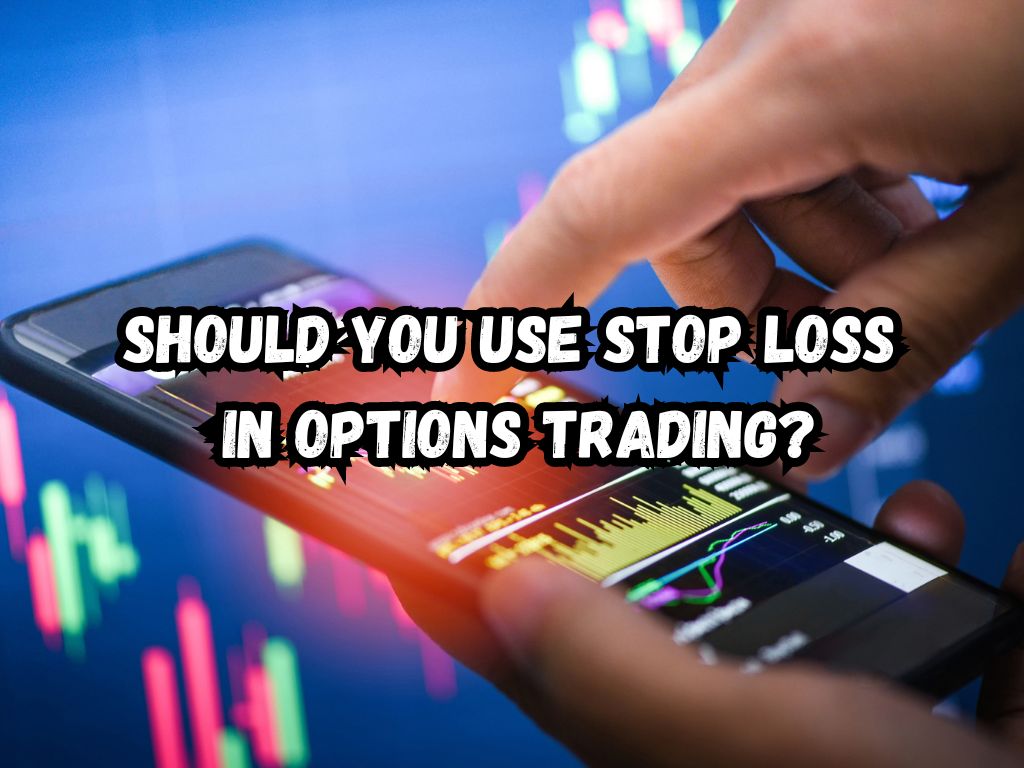Options trading stands as a crucial part of the financial markets, offering investors a way to hedge their portfolios, speculate on future price movements, and enjoy leverage not available with direct stock purchases.
Within this nuanced world lies the strategy of implementing stop-loss orders—a tool designed to limit an investor’s loss on a position.
But the decision to use stop loss in options trading is not straightforward and warrants a deeper look. Let’s understand, should you use stop loss in options trading?
Understanding Stop Loss in Options Trading
Definition of Stop Loss
At its core, a stop-loss order is a directive to sell an asset when it reaches a specific price. In options trading, this can mean selling an option contract when its value hits a predetermined level.
There are two types of stop-loss orders: stop-loss market orders and stop-loss limit orders. The former sells at the best available price after triggering, while the latter sells only at the trigger price or better.

Importance of Stop Loss in Trading
Stop-loss orders serve three main purposes: they manage risk by capping potential losses, protect unrealized profits, and relieve the psychological burden of monitoring open positions continuously.
They act as a form of insurance, ensuring that a bad trade does not turn catastrophic.
Should You Use Stop Loss In Options Trading?
Arguments abound both for and against the application of stop losses in options trading, each side presenting valid points based on risk tolerance, trading style, and market perspective.
Arguments for Using Stop Loss
Using stop losses can help limit potential losses to a manageable level, allowing traders to stay in the game even after a bad trade. They also enable emotional detachment from a trade.
With a stop-loss order in place, traders know they have a predetermined exit, reducing the likelihood of rash decisions based on fear or greed.
Arguments Against Using Stop Loss
Options inherently have a defined risk, given that a trader’s maximum loss is the premium paid for the option. Thus, some argue that additional loss-limiting strategies are redundant.
Moreover, options markets can be volatile, with prices often experiencing sharp, short-term movements that could trigger a stop loss, only to revert to profitable levels shortly thereafter.
How to Effectively Use Stop Loss in Options Trading?
When applied correctly, stop loss can be a powerful tool in an options trader’s arsenal. Here’s how:
Setting Stop Loss Levels
Deciding where to place a stop-loss order depends on personal risk tolerance and the specific trade.
A common approach is to set a stop loss at a level where the initial trade rationale is invalidated.
This might be a fixed percentage or dollar amount but must always account for the option’s volatility.
Stop Loss Strategies for Different Options Trades
Different options strategies might require different approaches to stop loss.
For example, a trader might buy a protective put to serve as a stop-loss mechanism for a long call position, instead of using a traditional stop-loss order.
Trillions stop losses can help protect profits on trades that are moving favorably.
The Role of Technical Analysis
Technical analysis can offer insights into where to set stop-loss orders. Using historical data to identify support and resistance levels helps in determining logical stop-loss points that are in sync with market behavior.
Potential Pitfalls and How to Avoid Them?
Even with a solid understanding of stop losses, traders can fall into traps that undermine their efficacy.
Avoiding Common Mistakes
Failing to adjust stop-loss orders following favorable price movements can leave profits unprotected.
Similarly, setting them too tightly might result in being stopped out of a position prematurely. Traders should also factor in major pending market events that could affect prices drastically.
Advanced Stop Loss Strategies
Some traders use options’ Greeks to build more nuanced stop-loss orders. For example, a stop-loss order might trigger based on a certain Delta level, reflecting a change in the option’s price relative to the underlying stock price.

Pro Tips
Regularly review and adjust stop loss levels to reflect current market conditions and trading goals.
Always consider the bigger picture of overall portfolio management and how each trade fits within it.
And, most importantly, continue to learn and adapt strategies based on market dynamics and personal trading experiences.
Frequently Asked Questions
Can stop loss orders guarantee no loss in options trading?
No, stop loss cannot guarantee no loss, as the execution of the order depends on market conditions. There might be scenarios where stop-loss market orders execute at less favorable prices than intended due to price gaps.
How do I choose between a stop-loss market order and a stop-loss limit order for my options trade?
The choice depends on priority: certainty of execution or control over the execution price. Stop-loss market orders offer certainty of execution, while stop-loss limit orders provide better control over price.
Is it advisable to use stop loss in a highly volatile market?
While stop loss can protect from significant losses, high volatility increases the risk of stop-loss orders getting executed due to temporary price spikes. Strategies need to be adjusted for market volatility.
How can I calculate the ideal stop-loss level for my options trading strategy?
The ideal stop-loss level depends on the trade’s rationale, risk tolerance, and market conditions. Using technical analysis to understand support and resistance levels can help in setting logical stop-loss points.
Conclusion
The decision to use stop loss in options trading is nuanced. While it offers a clear method to cap losses and protect profits, it is not without drawbacks, particularly in the volatile environments that options often inhabit.
Each trader must weigh the benefits and risks against their particular strategy, trading style, and risk tolerance. Applying stop loss in options trading requires a balanced approach.
Careful consideration of where to set stop losses and continuous market analysis can make them an effective part of an options trading strategy.
Ultimately, they are a tool—one of many in a trader’s toolkit to manage risk and achieve trading objectives.


 Tags:
Tags:










